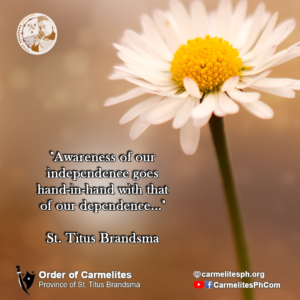
“When Europe was full of the battle cry of the Crusaders, ‘God wills it,’ and the Crusaders set out to recapture the holy places, Carmel was one of the first places to be won back. There they found the ruins of the old sanctuaries, and we are told some of them remained to restore the old life. From the narrative of John Phocas, a Greek monk, 1177, we know that one of the Crusaders of the West, St. Berthold, was instructed by the holy Prophet to collect together on Mount Carmel, those who were living the eremetical life there, and to unite them in community life; the year may be 1155. So the Prophet stands at the Order’s beginning. For proof of this we rely not so much on historical research, as on the fact that this memory and life has left their stamp upon the Order’s life. He has ever been the Order’s great exemplar. Indeed, so permanent has been his influence that St. Jerome calls him ‘the father of all the hermits and monks.’ In his epistle to Paulinus, he makes reference to Elias, Noster princeps Elias, nostri duces, filii Prophetarum. Likewise, Cassian in his Conferences points to him as the great example of all monks. Similarly, the testimony of Phocas, already mentioned, is completed by that of James de Vittry who was Bishop of Jean d’Acre, and well known to the hermits. It was written in 1221. He tells us that many Crusaders remained in the Holy Land for the sake of their devotion, to sacrifice their lives to God in places sanctified by His life. Some of those, he says, after the example of the Prophet Elias, dwelt in the caves of Carmel near the fountain of the Prophet and the sanctuary of Saint Margarita. Is it not providential that the first monks of the Order of Carmel, symbolizing the imitation of Elias, drank the water from the fountain that bears his name?”
Bl. Titus Brandsma
What do you think of this quote? Write it on the comment section.
📸 Raimond Klavins | Unsplash


